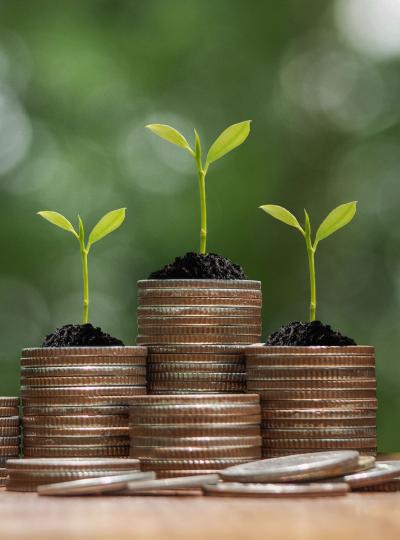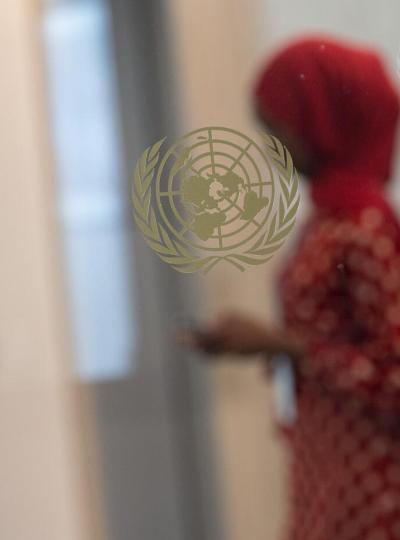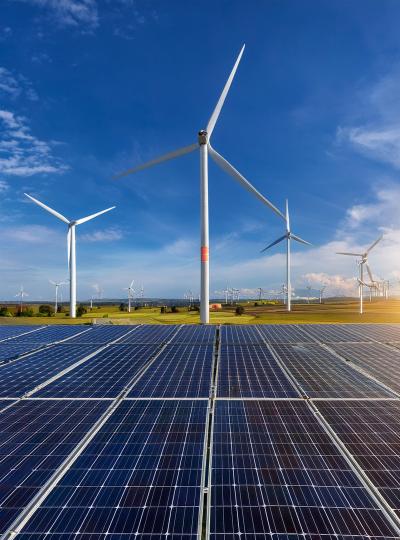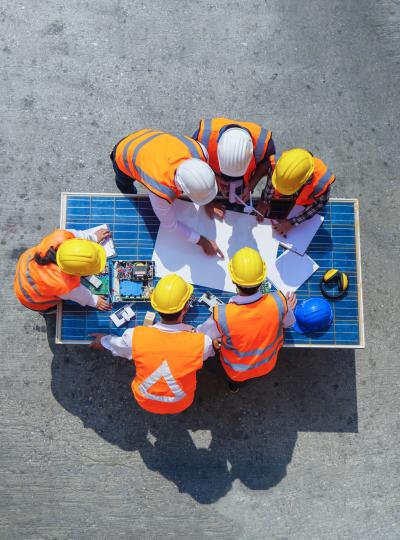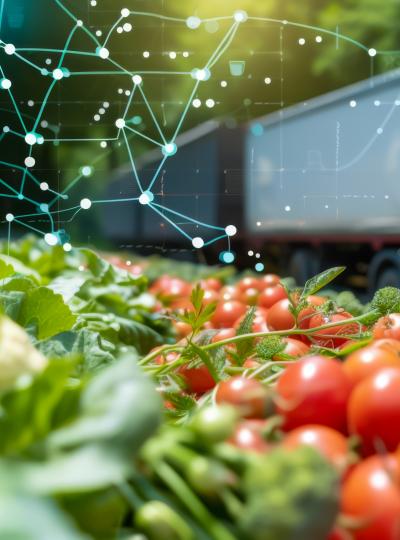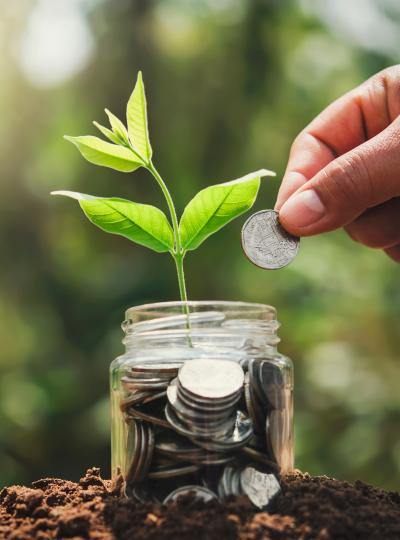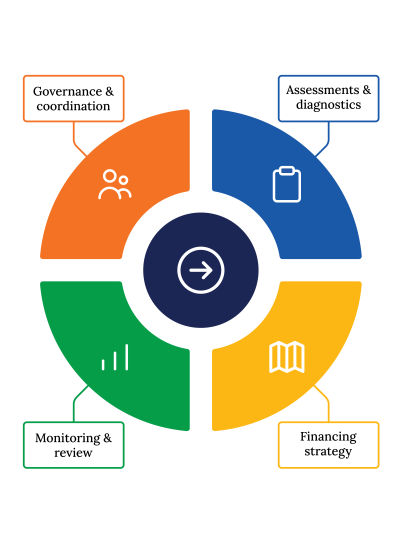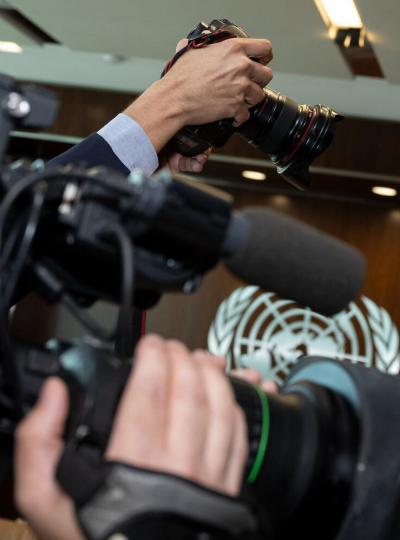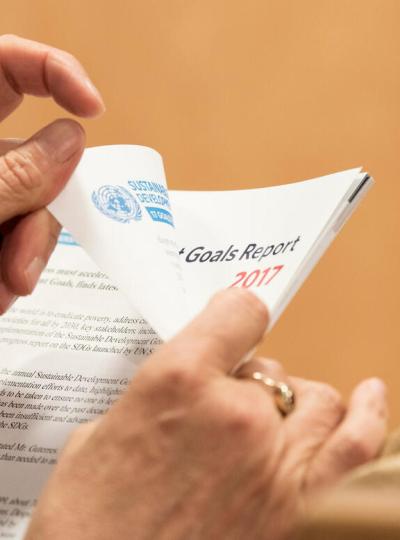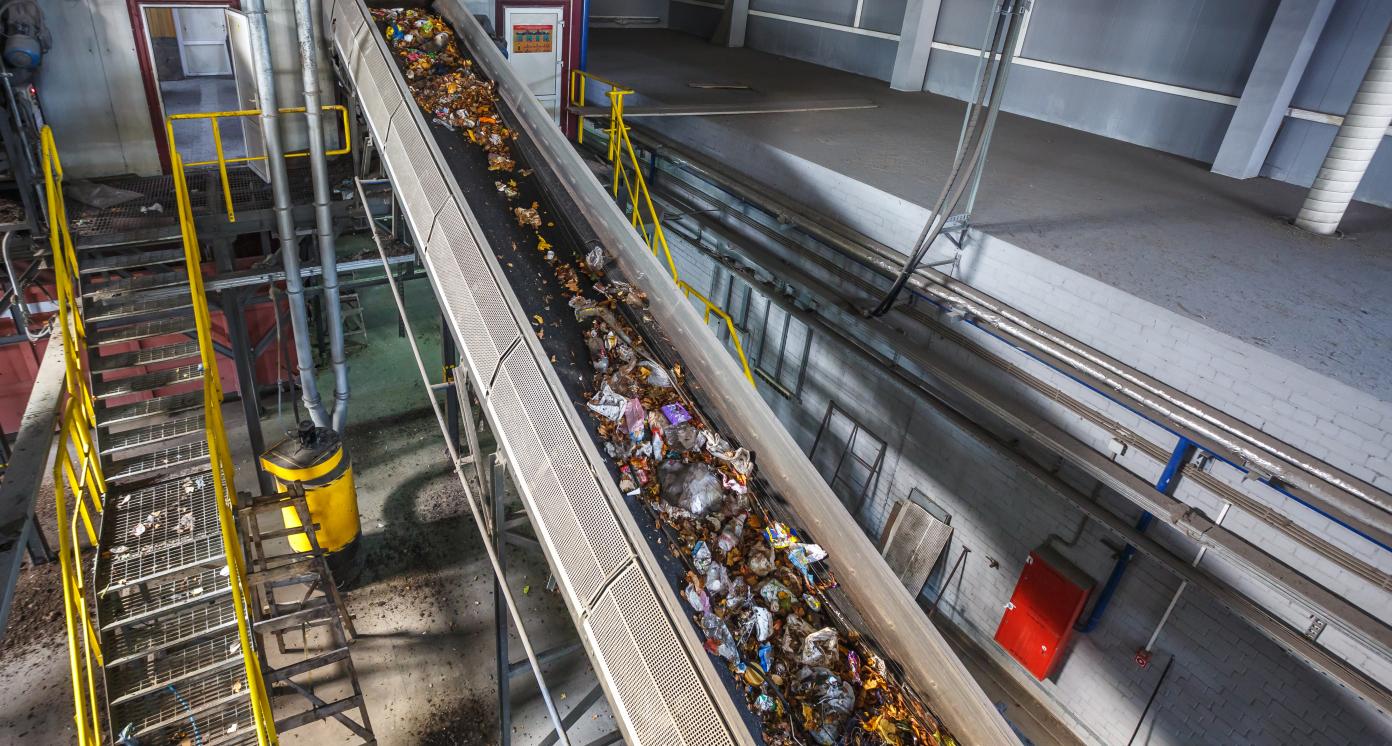Advanced waste-to-energy plants converting solid waste and biomass into renewable energy and biofuels
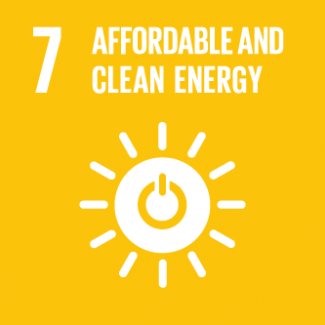
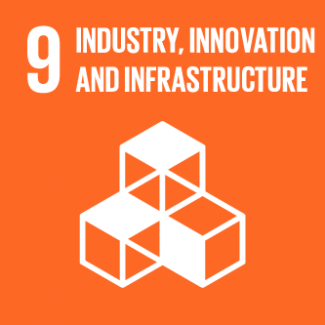
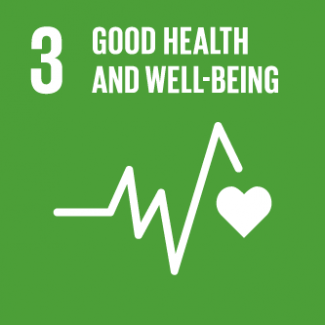
Business Model Description
Develop and operate waste-to-energy plants by processing municipal solid waste and biomass to generate renewable electricity, biomethane, and organic fertilizers. Revenue streams include energy sales to the grid, carbon credits, and waste processing fees. Establish long-term contracts with municipalities and industrial partners for waste supply and energy off take.
Expected Impact
Advancing sustainability through circular economy initiatives, reducing waste, creating jobs, and promoting renewable energy solutions.
How is this information gathered?
Investment opportunities with potential to contribute to sustainable development are based on country-level SDG Investor Maps.
Disclaimer
UNDP, the Private Finance for the SDGs, and their affiliates (collectively “UNDP”) do not seek or solicit investment for programmes, projects, or opportunities described on this site (collectively “Programmes”) or any other Programmes, and nothing on this page should constitute a solicitation for investment. The actors listed on this site are not partners of UNDP, and their inclusion should not be construed as an endorsement or recommendation by UNDP for any relationship or investment.
The descriptions on this page are provided for informational purposes only. Only companies and enterprises that appear under the case study tab have been validated and vetted through UNDP programmes such as the Growth Stage Impact Ventures (GSIV), Business Call to Action (BCtA), or through other UN agencies. Even then, under no circumstances should their appearance on this website be construed as an endorsement for any relationship or investment. UNDP assumes no liability for investment losses directly or indirectly resulting from recommendations made, implied, or inferred by its research. Likewise, UNDP assumes no claim to investment gains directly or indirectly resulting from trading profits, investment management, or advisory fees obtained by following investment recommendations made, implied, or inferred by its research.
Investment involves risk, and all investments should be made with the supervision of a professional investment manager or advisor. The materials on the website are not an offer to sell or a solicitation of an offer to buy any investment, security, or commodity, nor shall any security be offered or sold to any person, in any jurisdiction in which such offer would be unlawful under the securities laws of such jurisdiction.
Country & Regions
- Republic of North Macedonia: Skopje
- Republic of North Macedonia: Southeastern
- Republic of North Macedonia: Polog
Sector Classification
Infrastructure
Development need
The Republic of North Macedonia’s energy dependency, landfill overflow, and high emissions highlight the urgency of shifting to a circular economy and renewable energy. Yet, outdated infrastructure presents wider challenges—limited mobility, unreliable utilities, and weak digital networks hamper business, innovation, and growth. (1, 2)
Policy priority
The National Development Strategy 2024-2044 prioritizes renewable energy, waste valorization, and circular economy. Alignment with the EU Green Deal and SDG 7 enables funding. Government incentives include feed-in tariffs, carbon credits, and investment grants supporting green infrastructure through public-private partnerships (PPPs) for sustainable development. (2)
Gender inequalities and marginalization issues
Women and marginalized groups often face systemic barriers in the infrastructure sector, including limited access to quality jobs, underrepresentation in decision-making roles, and inadequate consideration of their needs in planning and service delivery. Physical infrastructure—such as transport, sanitation, and digital systems—is often designed without inclusive consultation, reinforcing social and economic exclusion. Targeted policies are needed to promote equitable participation, inclusive employment, and infrastructure that serves diverse communities effectively. (3, 4)
Investment opportunities
The Republic of North Macedonia offers growing infrastructure investment potential, with national priorities in transport, digital, water, and energy systems. Key projects include highway and railway upgrades, broadband expansion, and EU-backed initiatives like the Western Balkans Investment Plan, promoting sustainable and resilient development. (2, 5)
Key bottlenecks
The Republic of North Macedonia’s infrastructure sector faces regulatory delays, limited public investment, and heavy reliance on external funding. Institutional capacity gaps, poor inter-agency coordination, inadequate workforce training, and weak maintenance systems hinder effective project implementation and long-term infrastructure sustainability. (6)
Waste Management
Development need
The Republic of North Macedonia faces inefficient waste management, high landfill dependence, and low recycling rates. Transitioning to a circular economy is essential for reducing environmental pollution, methane emissions, and improving resource efficiency. Investments in modern waste processing, biogas plants, and waste-to-energy facilities are needed to ensure sustainable waste utilization. (21)
Policy priority
The strategic focus on waste valorization, circular economy, and renewable energy aims to enhance sustainability and resource efficiency. Emphasis is placed on aligning with EU environmental standards by promoting extended producer responsibility (EPR), advancing waste-to-energy solutions, and fostering public-private partnerships (PPPs) for infrastructure development. (2, 6)
Gender inequalities and marginalization issues
The waste management sector has low female workforce participation and limited inclusion of marginalized groups. Policies must promote gender-inclusive employment, support women-led waste startups, and provide vocational training. Informal waste collectors, often from vulnerable communities, need formalized employment and better working conditions. (35)
Investment opportunities
Investment areas include waste-to-energy plants, biogas facilities using agricultural waste, advanced recycling infrastructure, and PPP-based solid waste management projects. The sector offers revenue streams from energy sales, carbon credits, and waste processing fees. EU Green Funds and government incentives support investments in sustainable waste management. (22)
Key bottlenecks introduction
Regulatory delays, high capital costs, and lack of waste segregation infrastructure hinder investment. Public concerns over emissions impact project acceptance. Limited technical expertise slows innovation. Policy uncertainty affects investor confidence. To advance waste-to-energy solutions, North Macedonia must improve regulations, financing mechanisms, and workforce training. (19, 20, 21)
Waste Management
Pipeline Opportunity
Advanced waste-to-energy plants converting solid waste and biomass into renewable energy and biofuels
Develop and operate waste-to-energy plants by processing municipal solid waste and biomass to generate renewable electricity, biomethane, and organic fertilizers. Revenue streams include energy sales to the grid, carbon credits, and waste processing fees. Establish long-term contracts with municipalities and industrial partners for waste supply and energy off take.
Business Case
Market Size and Environment
USD 50 million - USD 100 million
5% - 10%
The estimated market size of $50M-$100M is supported by increasing investments in waste-to-energy and circular economy projects in North Macedonia. (13)
With a CAGR of 5-10%, the sector aligns with EU Green Agenda and national sustainability goals. Demand for energy diversification and waste reduction drives investment potential, supported by government incentives and PPP frameworks. (13)
The waste-to-energy sector in North Macedonia is projected to expand due to EU alignment and national sustainability policies. Increasing urbanization and waste generation drive market demand, with an expected annual capacity growth of 5-8%. Public-private partnerships (PPPs) and international funding enhance investment potential. (7)
National policies aim for a municipal waste recycling rate of ≥50% by 2030, up from the current ~10%. This target aligns with EU directives and is facilitated by new EPR schemes and regional landfill upgrades. (13)
Indicative Return
10% - 15%
Packaging waste EPR schemes boosted recycling rates from ~10% to ~20% in five years, projecting further growth with stricter landfill bans. (14, 15)
In the waste management sector, about 65% of surveyed entities report a ROI ranging from 5% to 15%. The remaining 35% project a 15%–25% return, primarily based on capacity expansion and available subsidies. (16)
With North Macedonia’s updated NDC aiming at 51% GHG reduction by 2030, waste-to-energy projects can tap voluntary carbon markets, raising ROI by an extra 1–2%. (15)
Investment Timeframe
Medium Term (5–10 years)
The National Waste Management Plan 2021‑2031 schedules the regional MBT plants and upgraded collection networks for Phase III (2027 onward), with full operational efficiency expected within two to three years of commissioning, roughly 6‑9 years after project launch. (15)
The medium-term suits waste management and energy transition due to regulatory alignment and infrastructure needs. Compliance with EU and national directives requires phased implementation, while MBT plants and biogas facilities need time for construction, testing, and optimization. (15)
Public-private partnerships (PPPs) and international funding mechanisms require structured approval processes, while specialized workforce training and public awareness initiatives are essential for ensuring the effective implementation and long-term sustainability of circular economy projects.(23)
Ticket Size
USD 500,000 - USD 1 million
Market Risks & Scale Obstacles
Capital - Requires Subsidy
Capital - Limited Investor Interest
Impact Case
Sustainable Development Need
The Republic of North Macedonia faces landfill overflow, poor waste management, and urban pollution. Waste-to-energy solutions advance circular economy goals, cut emissions, reduce landfill use, and help curb air and soil pollution from illegal dumping and open waste burning. (19, 38)
The country relies on imported fossil fuels, making energy security a critical concern. Investing in biogas and waste-to-energy facilities diversifies the energy mix, supports decarbonization, and aligns with EU sustainability goals. (39)
Gender & Marginalisation
The waste management and energy sectors in the Republic of North Macedonia have low female representation due to traditional labor market structures. Promoting gender-inclusive policies, training programs, and support for women-led green enterprises can enhance diversity. (26)
Vulnerable communities, including low-income groups and ethnic minorities, face barriers to formal employment. Waste-to-energy projects offer economic inclusion by integrating informal waste collectors into structured value chains. (27)
Rural communities often lack access to sustainable waste management and energy infrastructure. Decentralized biogas and waste-to-energy plants can improve local employment, energy security, and economic resilience in underserved areas. (28)
Expected Development Outcome
Waste-to-energy projects reduce landfill dependency, lower methane emissions, and promote circular economy practices, contributing to North Macedonia’s sustainability targets and EU Green Deal compliance.
Investments in waste valorization create new employment opportunities, formalize waste collection sectors, and support SMEs in green industries, enhancing economic resilience.
Biogas and waste-to-energy solutions reduce reliance on fossil fuels, increase renewable energy generation, and enhance grid stability, aligning with national and EU energy policies.
Gender & Marginalisation
Waste-to-energy projects promote gender inclusion by creating jobs for women in technical and managerial roles, reducing gender disparity in the energy sector.
Formalizing waste collection and recycling improves income opportunities for low-income workers, including Roma communities, fostering economic inclusion.
Investment in vocational programs and support for women-led green startups enhance skills and self-employment opportunities in the circular economy sector.
Primary SDGs addressed

7.2.1 Renewable energy share in the total final energy consumption
North Macedonia’s renewable energy share remains below the EU average. At 18.7 % in 2022, North Macedonia’s renewable share in gross final energy consumption lagged the EU‑27 average of 23 %, underscoring continued fossil‑fuel dependence. Current investments in waste‑to‑energy and bioenergy seek to narrow this gap, supporting national goals and the EU Green Agenda. (40)
By 2040, North Macedonia aims to boost renewable energy use in line with EU goals, reducing fossil fuel reliance. By 2040, renewable energy consumption is projected to rise by 20% in the reference scenario, 27% in the moderate transition, and 33% in the green scenario, driven by bioenergy, waste-to-energy, and supportive policy incentives. (29)
Secondary SDGs addressed


Directly impacted stakeholders
People
Gender inequality and/or marginalization
Planet
Corporates
Public sector
Indirectly impacted stakeholders
People
Gender inequality and/or marginalization
Planet
Corporates
Public sector
Outcome Risks
Waste-to-energy projects, if not properly regulated, may lead to increased emissions, including CO₂, impacting air quality and climate change mitigation efforts.
High capital costs and long return-on-investment periods may discourage private sector engagement, limiting the scalability and sustainability of such initiatives.
Displacement of informal waste collectors due to modernization of waste management processes could lead to job losses among vulnerable groups without proper reintegration programs.
Gender inequality and/or marginalization risk: The sector remains male-dominated, limiting employment opportunities for women and marginalized groups unless targeted policies and capacity-building programs are implemented.
Impact Risks
If waste-to-energy projects fail to scale, continued landfill dependency may lead to increased methane emissions, groundwater contamination, and biodiversity loss.
Insufficient investment and delayed policy support could hinder project implementation, reducing potential job creation and economic benefits.
Failure to integrate informal waste collectors into formal waste management systems could exacerbate social inequality and job displacement.
Delays in infrastructure development or failure to meet technical efficiency standards could reduce expected energy output and economic viability.
Gender inequality and/or marginalization risk: Without targeted policies, women and marginalized groups may remain underrepresented in waste management and energy transition initiatives.
Impact Classification
What
Waste-to-energy solutions, reducing landfill waste and greenhouse gas emissions while generating renewable energy and organic fertilizers.
Who
Directly impacts municipalities, waste collectors, and agricultural sectors by improving waste management efficiency and providing new economic opportunities.
Risk
Regulatory delays, financial constraints, and low public acceptance may hinder project implementation and scalability.
Contribution
Enhances circular economy practices, aligns with EU sustainability targets, and strengthens local energy security.
How Much
Targets to raise the rate of material recovery and energy valorisation of municipal waste from approximately 10 % in 2020 to 25–30 % by 2030. (37)
Impact Thesis
Advancing sustainability through circular economy initiatives, reducing waste, creating jobs, and promoting renewable energy solutions.
Enabling Environment
Policy Environment
National Waste Management Plan 2021–2031. Establishes waste reduction targets, circular economy principles, and investment incentives for waste-to-energy investment activities. (15)
Rulebook on Renewable Energy Sources Regulates biogas, solar, and wind investments, providing incentives like feed-in tariffs. (17)
Industry Strategy of R.M. Encourages eco-innovation, sustainable production, and low-carbon economic transition. (18)
National waste management plan of the Republic of North Macedonia 2021-2031. Key measures include the promotion of waste-to-energy solutions, mechanical-biological treatment plants, expanded recycling initiatives, and PPP-based infrastructure projects. (19)
Republic of North Macedonia’s National Development Strategy 2024‑2044 is the overarching framework for long‑term, inclusive growth. Its Green Transformation pillar mandates waste reduction, resource efficiency, and renewable‑energy integration, aligning with the EU Green Agenda. (7)
Financial Environment
Financial incentives: Guaranteed purchase prices for electricity generated from biogas, biomass, and waste-to-energy projects, encouraging investment in sustainable energy solutions. (30)
Fiscal incentives: Companies investing in renewable energy, waste processing, or sustainable infrastructure receive tax exemptions or reduced corporate tax rates. (14)
Other incentives: The government promotes PPP models for large-scale waste-to-energy plants, recycling facilities, and green infrastructure, mitigating financial risks for investors. (14)
Regulatory Environment
The Waste Framework Directive. Legal framework for waste collection, treatment, and disposal, promoting circular economy principles. It aligns with EU Waste Framework Directive and mandates mechanical-biological treatment (MBT) plants for municipal solid waste. (19)
According to the Law on Renewable Energy Sources the Republic of North Macedonia regulates national targets, support measures, and obligations for renewable energy production, including guarantees of origin and rights of active consumers, aligning with EU energy goals.
The Republic of North Macedonia’s Law on Environment sets sustainable‑development principles, mandates environmental‑impact assessments, and imposes pollution‑control and industrial‑emission standards, aligning national regulation with EU environmental directives. (20)
Marketplace Participants
Private Sector
Businesses drive waste-to-energy, circular economy, and renewable energy projects. They invest in recycling, energy recovery, and sustainable infrastructure, fostering environmental and economic sustainability.
Government
Ministry of Environment leads waste and circular economy policy; Ministry of Economy oversees energy; Finance manages funding and incentives. The Energy Agency supports implementation, RKE handles tariffs and licensing, and local Public Utility Enterprises manage waste services.
Multilaterals
Global financial and development institutions fund green energy, waste valorization, and climate resilience. They offer technical assistance, support PPPs, and drive investment in sustainable infrastructure.
Non-Profit
Environmental organizations and advocacy groups contribute through awareness campaigns, policy recommendations, and community engagement. They support circular economy initiatives, sustainability education, and green financing programs.
Public-Private Partnership
Partnerships between governments, investors, and multilaterals drive waste-to-energy projects, infrastructure upgrades, and resource management. They enable technology transfer, financing, and long-term viability.(14, 31)
Target Locations
Republic of North Macedonia: Skopje
Republic of North Macedonia: Southeastern
Republic of North Macedonia: Polog
References
- (1) Vaskalis, I., V. Skoulou, G. Stavropoulos, and A. Zabaniotou. 2019. "Towards Circular Economy Solutions for The Management of Rice Processing Residues to Bioenergy via Gasification" Sustainability 11, no. 22: 6433. https://doi.org/10.3390/su11226433
- (2) National Development Strategy 2024-2044
- (3) UNFCCC (2016). Engendering Utilities: Improving Gender Diversity in Power Sector Utilities.
- (4) Johnson, O. W., Han, J. Y. C., Knight, A. L., & Mortensen, S. (2020). Intersectionality and energy transitions: A review of gender, social equity, and low-carbon energy. Energy Research & Social Science. Elsevier.
- (5) McClellan, K. (2021). Financing strategy for the Macedonian enhanced nationally determined contributions to climate change. UNDP, Klimatskipromeni.mk.
- (6) Green Agenda for the Western Balkans Opportunities for North Macedonia, IDSC
- (7) National Strategy for Sustainable Development in the Republic of Macedonia, 2008. Ministry of Environment and Physical Planning of the Republic of Macedonia
- (8) Vinca Energy-From-Waste Facility, Construction of the New Landfill and Remediation of the Existing Landill, Environmental and Social Impact Assessment
- (9) Onder, D., Ertugrul, (2013) Biogas Production from Household Wastes - A Quantitative Feasibility Study for Student Apartments in Albano, Stockholm.
- (10) Power pland profile: Sofia Waste to Energy Power Pland, Bulgaria. Description: Sofia Waste to Energy Power Plant is a combined heat and power (CHP) project. Municipal solid waste will be used as a feedstock to power the project.
- (11) Alessandro Rosati, Pol Camps, Carla Sebastiani, (2023), Overview of the Greek market condition, HORIZON EUROPE Coordination and Support Actions
- (12) Circular Economy Roadmap of Kosovo (2023), Ministry of Environment, Spatial Planning and Infrastructure
- (13)Solid Waste Management in Polog Region, North Macedonia, Phase I, 2020. https://www.moepp.gov.mk/wp-content/uploads/2020/12/Regional-Waste-Manegement-Plan-Polog-Region1.pdf
- (14) Economic Reform Programme 2024-2026 - Chapter 5, Ministry of Finance, North Macedonia.
- (15) Ministry of Environment and Physical Planning (MoEPP), “National Waste Management Plan 2021–2031. https://www.moepp.gov.mk/wp-content/uploads/2021/10/%D0%9F%D0%BB%D0%B0%D0%BD-%D0%B7%D0%B0-%D0%A3%D0%BF%D1%80%D0%B0%D0%B2%D1%83%D0%B2%D0%B0%D1%9A%D0%B5-%D1%81%D0%BE-%D0%BE%D1%82%D0%BF%D0%B0%D0%B4-%D0%BD%D0%B0-%D0%A0%D0%A1%D0%9C-2021-%D0%B4%D0%BE-2031-%D0%B3%D0%BE%D0%B4%D0%B8%D0%BD%D0%B0.pdf
- (16) Interviews with companies
- (17) RULEBOOK ON RENEWABLE ENERGY SOURCES
- (18) Industry Strategy of the Republic of Macedonia 2018-2027, with Action Plan
- (19) National waste management plan of Republic of North Macedonia 2021-2031 Ministry of environment and Physical planning (Skopje, 2021)
- (20) Law of environmental protection, Republic of North Macedonia, Official Gazette of RM No. 53/2005, changes current.
- (21) Ministry of Environment and Physical Planning (2024), National Waste Management Strategy 2024-2036
- (22) European Commission (2021). Economic and Investment Plan for the Western Balkans. European Union
- (23) World Bank (2019), Public-Private Partnership in the Republic of North Macedonia. Baseline Report on the Current PPP Framework.
- (24) Song, J., Song, D., & Zhang, D. (2015). Modeling the Concession Period and Subsidy for BOT Waste-to-Energy Incineration Projects. Journal of Construction Engineering and Management-Asce, 141(10), 04015033. https://doi.org/10.1061/(ASCE)CO.1943-7862.0001005
- (25) European Commission (2021) Impact assessment study on investment protection and facilitation in the EU
- (26)UN WOMEN, National Research on Low Female Labour Market Participation - Quantitative based evidence from a new survey
- (27) Manual for the Development of Social Services for Vulnerable Groups in Local Communities (2013), Ministry of Labor and Social Policy
- (28) National Strategy for Agriculture and Rural Development for the period 2021-2027, Ministry of Agriculture, Forestry and Water Management. Republic of North Macedonia
- (29) The Strategy for Energy Development in the Republic of North Macedonia until 2040
- (30) Development Bank of North Macedonia.Credit line for energy efficiency and renewable energy sources – Credit for EE and RES "31) LAW ON CONCESSIONS AND PUBLIC-PRIVATE PARTNERSHIP (Official Gazette of the Republic of North Macedonia No. 6/2012, 144/2014, 33/2015,104/2015, 215/2015, 153/2019, 261/2019)"
- (32) Program for the Development of the Skopje region 2021-2026, https://skopjeregion.gov.mk/dokumenti/programa-za-razvoj/
- (33) Program for the Development of the Southeast Planning Region 2021-2026, Center for the Development of the Southeast Planning Region
- (34) 33) Polog Planning Region Development Program 2021-2026, Polog Planning Region Development Center
- (35) ILO (2024) Beyond the bin: Decent work deficits in the waste management and recycling industry. Internet Source.
- (36) WBIF (2022) Celan Energy Overwiew
- (37) OECD (2024) A Roadmap towards Circular Economy of North Macedonia, OECD Publishing, Paris,
- (38) EEA, North Macedonia – Municipal waste management country fact-sheet (2021).
- (39) Energy Community Secretariat. Industry in North Macedonia – Indicators and Measures (Presentation, Vienna, Nov 2024): “Challenges: Energy Dependence: Reliance on imported fossil fuels.”
- (40) Eurostat (2024) Resources and green transformation in candidate countries and potential candidates

